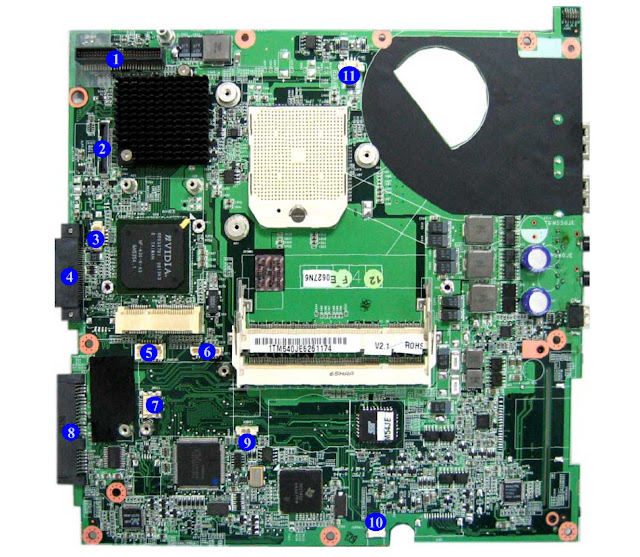Clevo M540JE, M550JE Motherboard Schematic Circuit Diagram
Clevo M540JE, M550JE Motherboard Schematic Circuit Diagram
Cache Performance and Design
Then came a breakthrough, which was initially seen in Celeron CPUs 300A and above. The L2 cache was 128KB, but no extra chips were used. Instead, like the L1, the L2 cache was built directly into the CPU core. As a result, both the L1 and L2 caches will now function at maximum processor speed, and will also scale up in speed as processor speeds grow in the future. The L2 cache operates at full processor core speed on the later Pentium III, as well as all Xeon and Celeron processors, thus there is no waiting or slowing down following an L1 cache miss. In later Athlon and Duron processors, AMD also achieved full-core speed on-die cache. Because the system uses the L2 90% of the time, using an on-die cache boosts speed considerably. Instead of slowing down to half or less of the processor speed, or even worse, slowing down to motherboard speed as in Socket 7 designs, it now runs at full speed. Another advantage of on-die L2 cache is the lower cost, which is due to the fewer components involved. When the L1 and L2 caches do not contain the needed data, L3 on-die caches provide the same benefits. Furthermore, because the L3 cache is much larger than the L2 cache (6MB in AMD Phenom II and 12MB in Core i7 Extreme Edition), the chances of all three cache levels not storing the needed information are lowered when compared to CPUs that only have L1 and L2 cache.
Let's use a 3.6GHz CPU to revisit the restaurant example. You'd be biting every half second now (3.6GHz = 0.28ns cycle). You could eat anything on your table at that speed since the L1 cache was also running at that pace (table = L1 cache). When you want anything that isn't currently on the table (L1 cache miss), the waiter reaches over to the cart (which is now right adjacent to the table) and 9 out of 10 times finds the food you want in less than a quarter second (L2 speed = 3.6GHz or 0.28ns cycle). You'd run at 3.6GHz 99 percent of the time (L1 and L2 hit ratios combined) and only slow down to RAM speed (wait for the kitchen) 1% of the time in this configuration. You would just have to wait 1.25 seconds for the food to arrive from the kitchen if you had quicker memory operating at 800MHz (1.25ns). If only restaurant performance increased at the same pace as CPU performance!







